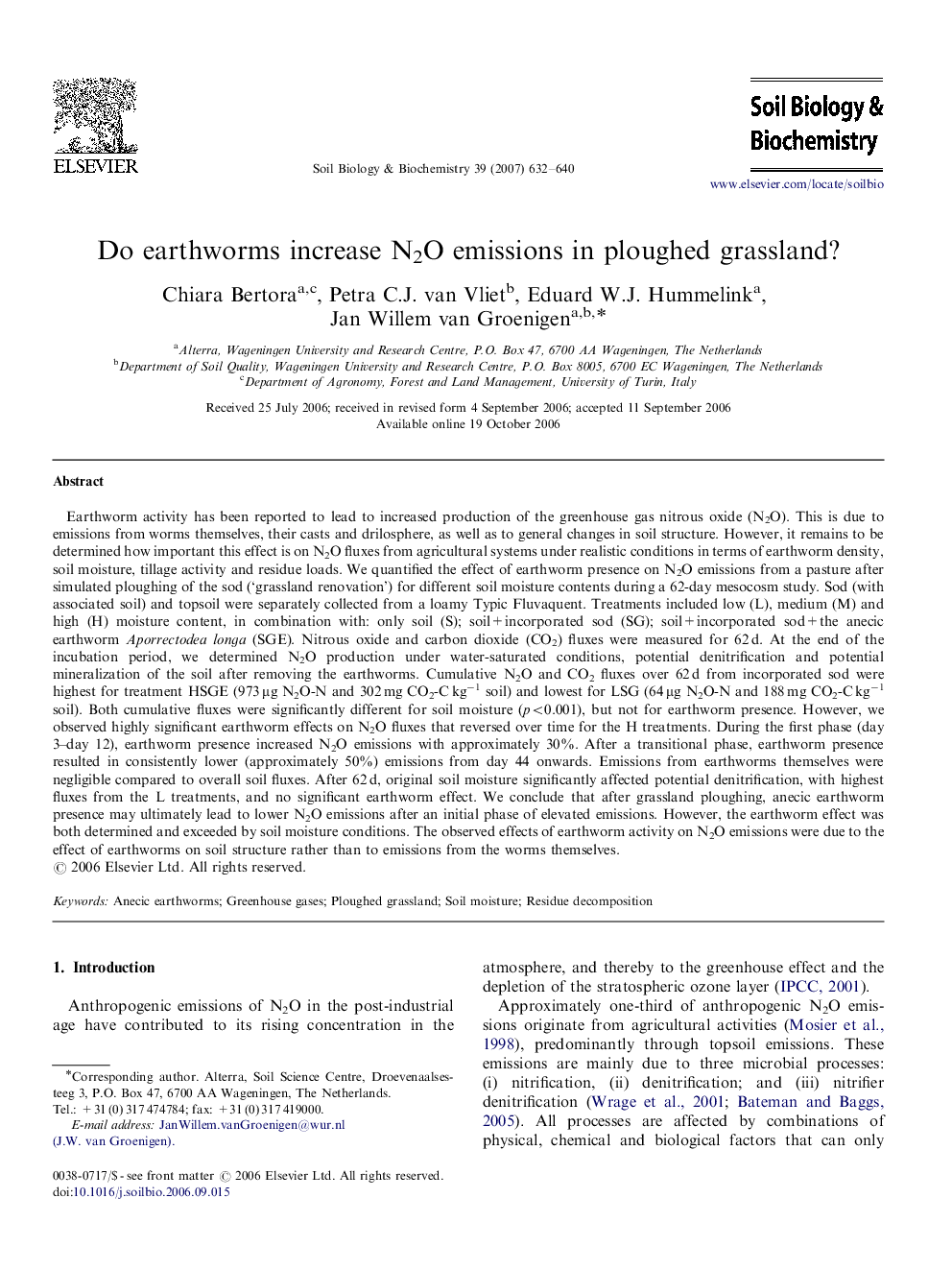| Article ID | Journal | Published Year | Pages | File Type |
|---|---|---|---|---|
| 2026483 | Soil Biology and Biochemistry | 2007 | 9 Pages |
Earthworm activity has been reported to lead to increased production of the greenhouse gas nitrous oxide (N2O). This is due to emissions from worms themselves, their casts and drilosphere, as well as to general changes in soil structure. However, it remains to be determined how important this effect is on N2O fluxes from agricultural systems under realistic conditions in terms of earthworm density, soil moisture, tillage activity and residue loads. We quantified the effect of earthworm presence on N2O emissions from a pasture after simulated ploughing of the sod (‘grassland renovation’) for different soil moisture contents during a 62-day mesocosm study. Sod (with associated soil) and topsoil were separately collected from a loamy Typic Fluvaquent. Treatments included low (L), medium (M) and high (H) moisture content, in combination with: only soil (S); soil+incorporated sod (SG); soil+incorporated sod+the anecic earthworm Aporrectodea longa (SGE). Nitrous oxide and carbon dioxide (CO2) fluxes were measured for 62 d. At the end of the incubation period, we determined N2O production under water-saturated conditions, potential denitrification and potential mineralization of the soil after removing the earthworms. Cumulative N2O and CO2 fluxes over 62 d from incorporated sod were highest for treatment HSGE (973 μg N2O-N and 302 mg CO2-C kg−1 soil) and lowest for LSG (64 μg N2O-N and 188 mg CO2-C kg−1 soil). Both cumulative fluxes were significantly different for soil moisture (p<0.001), but not for earthworm presence. However, we observed highly significant earthworm effects on N2O fluxes that reversed over time for the H treatments. During the first phase (day 3–day 12), earthworm presence increased N2O emissions with approximately 30%. After a transitional phase, earthworm presence resulted in consistently lower (approximately 50%) emissions from day 44 onwards. Emissions from earthworms themselves were negligible compared to overall soil fluxes. After 62 d, original soil moisture significantly affected potential denitrification, with highest fluxes from the L treatments, and no significant earthworm effect. We conclude that after grassland ploughing, anecic earthworm presence may ultimately lead to lower N2O emissions after an initial phase of elevated emissions. However, the earthworm effect was both determined and exceeded by soil moisture conditions. The observed effects of earthworm activity on N2O emissions were due to the effect of earthworms on soil structure rather than to emissions from the worms themselves.
